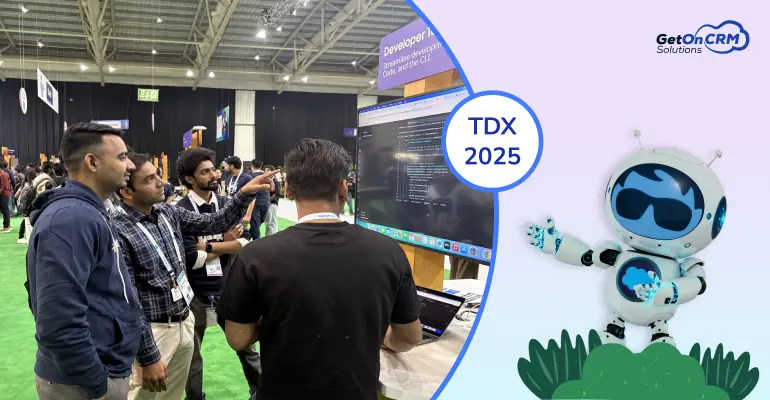Insurance platform modernization (IPM) signifies a pivotal shift towards embracing advanced digital technologies in the insurance industry. This transformation encompasses more than just the adoption of new technologies like AI, blockchain, and cloud computing; it’s a complete remodelling of business operations, customer engagement, and service delivery methods. Leveraging Salesforce Industry solutions, aiding insurers in navigating these technological advancements. Integrating Salesforce solutions into insurance processes exemplifies the transformative impact of digitalization in this sector.
Understanding Insurance Platform Modernization (IPM)
The Evolving Landscape of Insurance Technology
The landscape of insurance technology is witnessing a paradigm shift driven by advanced digital technologies and changing customer expectations. Artificial intelligence (AI), machine learning (ML), blockchain, and cloud computing are no longer futuristic concepts but integral components of the insurance sector’s current narrative. This transformation goes beyond mere technology adoption; it signifies a profound change in business models, operational efficiencies, and customer engagement strategies.
Key Drivers of IPM
The impetus for IPM stems from several key drivers:
- Automation: Automating manual tasks not only streamlines operations but also enhances employee satisfaction by freeing them from mundane tasks. This shift is crucial for attracting and retaining top talent in a competitive landscape.
- Customer Experience: In today’s digital age, customers expect seamless, real-time interactions. Modernizing platforms is essential for delivering an enhanced customer experience characterized by ease of access, personalized services, and efficient resolution of queries and claims.
- Operational Efficiency: Legacy systems, often rigid and costly to maintain, are a significant hindrance to operational efficiency. Cloud-based systems and AI-driven tools, expertly integrated by GetOnCRM Solutions, offer streamlined operations and advanced data analytics capabilities.
Modernization Approaches to Insurance
Choosing the Right Modernization Path
Insurance companies face a strategic decision when modernizing: upgrade existing legacy systems, build proprietary platforms, or purchase standard software packages. Each path has its merits and challenges:
- Modernizing Legacy Systems: This often involves refactoring, which can extend the life of existing systems while introducing new technologies. However, this approach may miss opportunities for more advanced system integration and could lead to increased costs if not managed carefully.
- Building a Proprietary Platform: This option allows insurers to tailor solutions to their unique requirements, leading to potentially significant cost savings and operational efficiencies. However, it requires substantial investment and in-house expertise.
- Purchasing Standard Software Packages: Ideal for insurers with low internal IT capabilities, this option can provide access to market standards quickly. However, it may limit customization and differentiation from competitors.
Evaluating the Legacy Platform
Evaluating the current state and stability of legacy systems is critical. For systems that are stable but technologically outdated, modernization might involve upgrading certain components, such as the integration layer, to improve functionality and support digital requirements.
The Role of Emerging Technologies in IPM
Cloud Computing and AI
Cloud computing offers scalable, efficient, and cost-effective solutions essential for modernizing insurance platforms. AI, on the other hand, brings advanced data analytics capabilities, enabling better customer insights and more tailored products.
Cybersecurity Considerations
With the increasing adoption of digital technologies, cybersecurity has become a paramount concern. Insurers must ensure that modernized platforms are not only efficient and user-friendly but also secure against evolving cyber threats.
Incorporating IoT and Big Data Analytics
The Internet of Things (IoT) and big data analytics offer tremendous opportunities for insurers. IoT devices can help in proactive loss prevention and risk assessment, while big data analytics can provide deeper insights into customer behaviour and market trends.
Integrating Salesforce Industries Solutions
Evaluating Potential Modernization Partners
Selecting the right partner for insurance platform modernization is a decision of strategic importance. Key criteria include:
- Technology Assessment Capabilities: A good partner should begin with a thorough evaluation of your current technology, identifying areas for improvement and alignment with business goals.
- Alignment with Business Objectives: The partner should understand your business objectives and demonstrate how their solutions will help achieve these goals.
- Expertise in Digital Transformation: Look for partners with a proven track record in digital transformation, especially within the insurance industry.
Leveraging Salesforce for Modernization
Salesforce Industries, as a leading provider of CRM solutions, can play a crucial role in the modernization of insurance platforms. Its solutions can help insurers improve customer engagement, streamline operations, and gain better insights through data analytics.
Case Studies and Success Stories of Salesforce Industries Solutions in Insurance
Salesforce Industries solutions have significantly transformed the insurance sector by enabling companies to harness the power of digital transformation and automation. Here are some detailed examples and success stories illustrating the impact of Salesforce’s technologies in the insurance industry:
Enhancing Customer Experience and Operational Efficiency
- Salesforce’s CRM functionalities have been instrumental in empowering insurance companies to manage customer relationships effectively. By gathering and analyzing customer data, insurers can understand customer preferences, anticipate needs, and tailor products and services accordingly.
- The omnichannel capabilities of Salesforce enable insurers to deliver consistent customer experiences across various touchpoints, thereby ensuring customer satisfaction and loyalty.
- Moreover, Salesforce’s AI-powered tools facilitate data analysis, customer behaviour predictions, and personalization of customer interactions, thereby improving operational efficiency and reducing manual errors through digital transformation.
Usage-Based Insurance (UBI) Innovations
- The integration of telematics data with the Salesforce platform allows insurers to manage and utilize customer data better.
- This integration is particularly effective in the realm of usage-based insurance (UBI), where insurers can personalize pricing and offer usage-based products while incentivizing safer driving habits and better healthcare practices.
- Salesforce’s predictive analytics and trends also facilitate more efficient policy administration and claim processing in UBI offerings.
Cyber Insurance Advancements
- Salesforce has played a crucial role in the evolving domain of cyber insurance. With its secure data features and compliance functions, Salesforce aids insurance companies in handling sensitive customer information with utmost care.
- Custom Salesforce CPQ solutions enable insurers to develop and personalize comprehensive cyber insurance products and policies.
- Additionally, integration with Sales Cloud and Marketing Cloud automates policy underwriting processes, engages policyholders proactively, and educates them on cyber risks across all touchpoints.
Streamlined Distribution Management and Agent Engagement
- A notable case involves an insurance broker who developed an agent portal with the help of Salesforce’s Experience Cloud.
- This implementation enhanced agents’ experiences by offering a consistent branding experience, better communication channels, and optimized data security.
- As a result, the broker observed streamlined communications, improved agent engagement, and better relationship building between agents, brokers, and TPAs.
Data-Driven Decision-Making and Regulatory Compliance
- Salesforce’s robust analytics and reporting capabilities have enabled insurers to gain insights into claims trends, detect fraud, and optimize claims processes.
- Moreover, Salesforce’s reporting and auditing features ensure adherence to regulatory compliance, which is critical in the insurance industry.
- These capabilities have been pivotal in elevating the customer experience, offering personalized interactions, and providing AI-driven recommendations.
Scalability and Integration for Future-Proof Solutions
- Salesforce’s scalability and integration capabilities provide insurers with a solution that can adapt and evolve with the industry’s needs.
- This flexibility is essential for integrating with legacy systems, third-party data sources, or emerging technologies like AI and blockchain.
Managing the Transition: Strategies for Success
Aligning IT with Business Strategies
A successful modernization initiative requires aligning IT strategies with overall business objectives. That involves understanding the business’s vision and ensuring that the technological improvements align with this vision. Regular reevaluation of these plans, especially under changing business conditions, is essential to stay on track.
Simplifying and Optimizing IT Infrastructure
Streamlining and optimizing the IT infrastructure is vital for cost-effective operations. It may include a technology refresh, incorporating lean processes, automation, and eliminating underused systems. Continuous optimization through automated workload management tools can also bring substantial benefits.
Phased Implementation and Risk Management
Implementing modernization in phases can help manage risks and ensure smoother transitions. This approach allows for testing and refinement at each stage, reducing the likelihood of significant disruptions to business operations.
Measuring Success and ROI in Modernization Projects
Key Performance Indicators (KPIs)
To gauge the success of modernization efforts, it’s crucial to establish clear KPIs. These may include improved operational efficiencies, enhanced customer satisfaction, reduced operating costs, and increased revenue growth.
Long-term Benefits of Modernization
While the immediate benefits of modernization are evident, it’s essential also to consider the long-term impacts. These include staying competitive in a rapidly changing industry, being able to adapt to future technological advancements, and maintaining regulatory compliance.
Assessing ROI and Customer Satisfaction
Return on investment (ROI) should be a primary measure of success, alongside improved customer satisfaction. Modernization should ultimately lead to better customer experiences, as well as financial benefits for the company.
Future Trends in Insurance Technology Modernization
Predictions for the Future of IPM
Looking ahead, IPM is expected to continue evolving, with emerging technologies playing a significant role. AI, ML, and blockchain are likely to become more deeply integrated into insurance platforms, driving further innovation and efficiency.
Preparing for the Next Wave of Technological Advancements
Insurers must stay informed about emerging trends and be ready to adapt to new technologies. That includes investing in ongoing training for staff and considering partnerships with tech firms to stay ahead of the curve.
Also Read: Generative AI and Einstein GPT: The Future of Customer Service
Conclusion
Choosing the right partner for insurance platform modernization is a decision that will significantly impact an insurer’s ability to navigate a digitally driven future. By understanding the critical aspects of modernization, aligning with the right technology partner, and leveraging emerging technologies, insurers can ensure a successful transformation that not only meets current needs but also positions them for future growth and innovation.



















